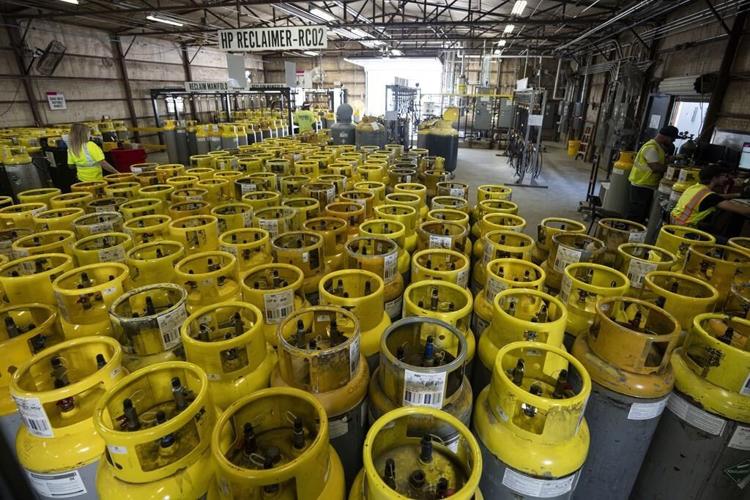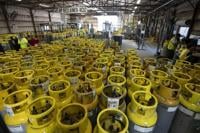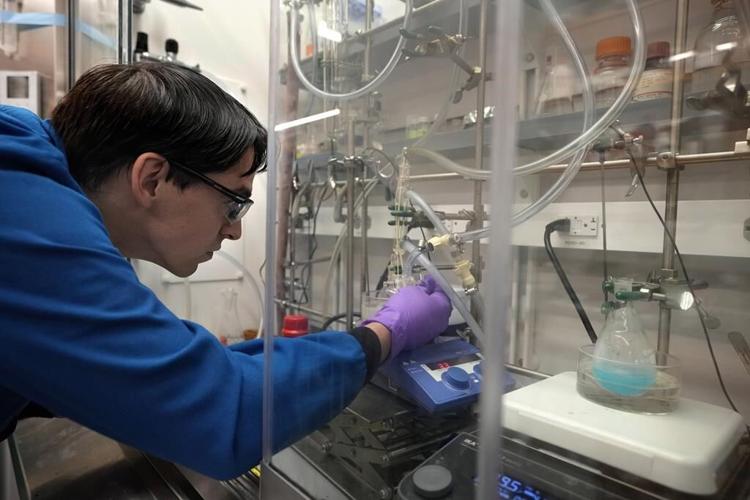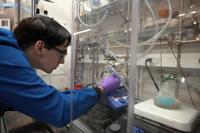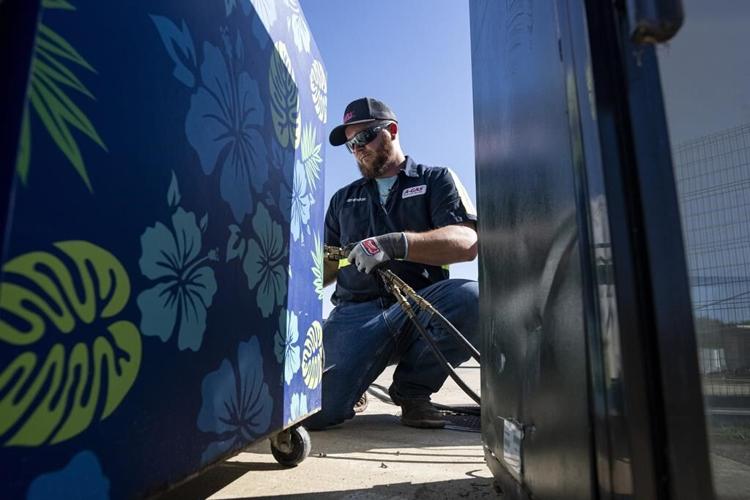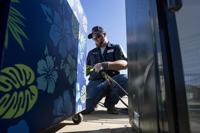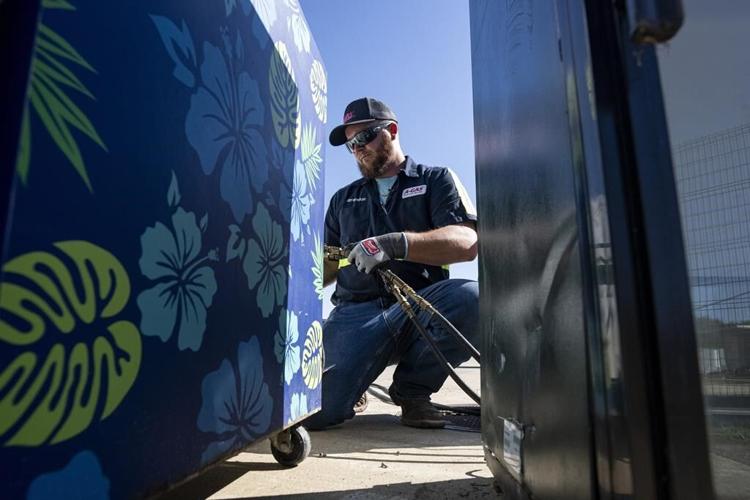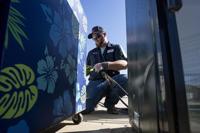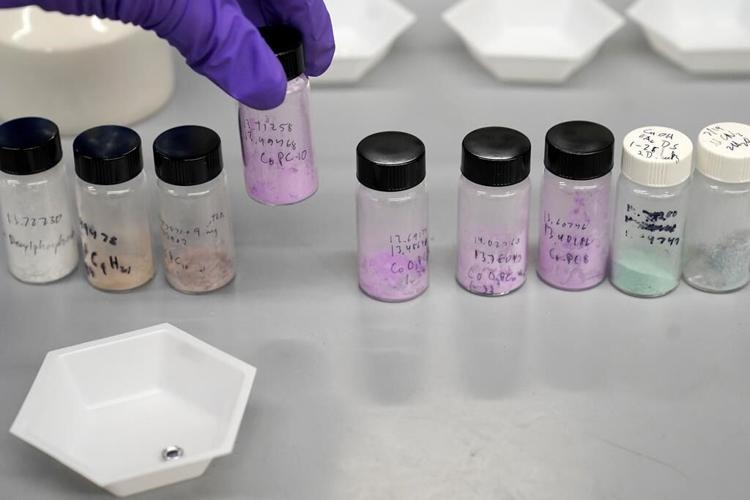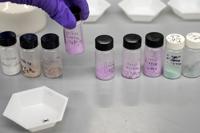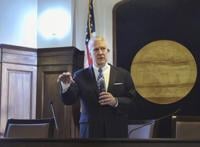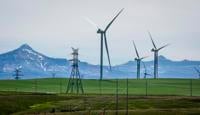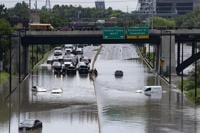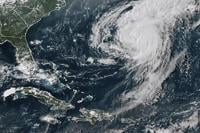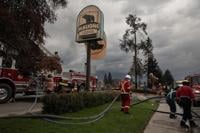PHILADELPHIA (AP) — When Jennifer Byrne, owner and technician at Comfy Heating and Cooling, gets a call to come and fix a relatively new air conditioning system, one of the first questions she asks is if the house has just been remodeled.
Here in West Philadelphia, Byrne has found shoddy renovations where installers skip steps such as pressure testing after installation. That can result in ice buildup and leaks of the chemicals that cool, called .
“This problem is extremely frequent around here. Usually people tell you they bought a house that was flipped and all kinds of things are wrong, like the AC is freezing,” Byrne said, referring to the ice buildup.
"Trying to get it done as cheaply as possible,” she added, as she hauled equipment out of her truck.
It's not a small matter. When refrigerants leak out like this, they are highly destructive to the Earth's sensitive atmosphere. They're “the most potent greenhouse gases known to modern science,” as one put it and they're growing fast.
One of the most common ones, with the unfriendly name R-410A, is 2,088 times more damaging to the climate than , which comes from burning coal and gasoline. So an essential way that people are staying cool is .
This is why the Clean Air Act prohibits the intentional release of most refrigerants. With the Environmental Protection Agency required to phase out one family of the chemicals 85% by 2036, the push is on to develop and spread cleaner alternatives.
Byrne's truck is loaded with tools, canisters, hoses, and special sealed cylinders, including an industry-pink one that holds the potent R-410A. When she works on a leaking AC unit, she drains the remaining refrigerant into one of the cylinders for safe storage while she takes things apart.
But these leaking home AC units are just one way refrigerants seep into the atmosphere, measurably raising levels and contributing to increasing extreme weather.
Cars are another source of these super pollutants, says Eckhard Groll, an expert in refrigeration and head of mechanical engineering at Purdue University. AC systems in gas-powered vehicles are “prone to leaking” and on average approximately 25% of refrigerant from all cars leak out every year. With more than 200 million gasoline cars in the U.S. alone, Groll said that amounts to approximately 100 million pounds of refrigerant leaking out into the atmosphere each year.
Supermarkets are the second-biggest source of leaks because they are large and extensive piping carries refrigerant to each cold display case. Danielle Wright, executive director of the North American Sustainable Refrigeration Council, an advocacy group, said the average supermarket leaks approximately 25% of its refrigerant each year, which agrees with an Environmental Protection Agency from 2011.
“I wouldn’t say (supermarkets) are cutting corners necessarily, but let’s put it this way — it’s cheaper to leak the refrigerant than to build a leak-proof system,” Wright said.
The need to minimize refrigerant leaks has spurred a reuse and reclamation industry. One company is A-Gas Rapid Recovery, which has facilities in Dallas, Texas, Toledo, Ohio and Punta Gorda, Florida, among others.
Refrigerants can be used many times over and can last for 30 years, said Mike Armstrong, President of A-Gas in the Americas. The company takes in refrigerants and tanks from around the country and beyond, drains them, then purifies and reclaims the chemicals, shipping out recycled product.
“Some technicians back in the day would literally just cut the line and vent the gas to the atmosphere,” said Anthony Nash, an A-Gas network training manager. Now, "the EPA and the regulations that we fall under make that not only illegal, but unethical,” he said.
Refrigerant that cannot be reused goes through a very high-temperature process called pyrolysis so the gases are destroyed. Business is booming.
“This industry is probably going to increase four to five times in the next couple years,” Armstrong said.
SUSTAINABLE REPLACEMENTS
At the same time the chemical industry is looking for replacements. So far, some are much better for the climate, but could have other negatives, like being flammable, and their long-term impact on the environment isn't known.
A number of researchers are looking at carbon dioxide itself as a refrigerant. But Groll noted it has to be under extremely high pressure, requiring different systems.
Carbon dioxide would be great “if we’re pulling it out of the atmosphere,” said Christopher Cappa, a professor of environmental engineering at the University of California, Davis. “But if we’re producing it just as a refrigerant, that wouldn’t be necessarily nearly as good.”
“One could think of a future where we move to a largely fossil-free economy and our primary source of carbon dioxide would be pulling it out of the atmosphere,” Cappa said.
Today, commercial buyers looking for cleaner refrigeration can find it. “This is kind of a low-hanging fruit, it’s a known technology and it’s market ready,” Wright said.
But it's a different story with air conditioning. Wright claims that lobbying efforts from chemical and HVAC equipment manufacturers, as well as certain codes and standards, have stalled the growth of cleaner refrigerants for air conditioners in the U.S.
But one major manufacturer, Trane Technologies, said it has been working hard on cleaner alternatives, has selected one that is 78% less damaging than the current one, and will be phasing it into its units beginning in 2024.
Jarad Mason, an assistant professor of chemistry and chemical biology at Harvard University, is working with fellow researchers to develop a refrigerant that's actually a solid instead of a vapor. The mineral perovskite is good at absorbing heat under low pressure, allowing it to cool its surroundings.
Solid refrigerant research is in it’s infancy, but Mason said that he is optimistic about its potential because it could be used in fridges, commercial buildings and homes.
“Demands for heating and cooling are only going to increase and it’s absolutely critical that we have sustainable ways and economical ways of providing for everyone in the world,” he said.
___
Associated Press climate and environmental coverage receives support from several private foundations. See more about AP’s climate initiative . The AP is solely responsible for all content.

